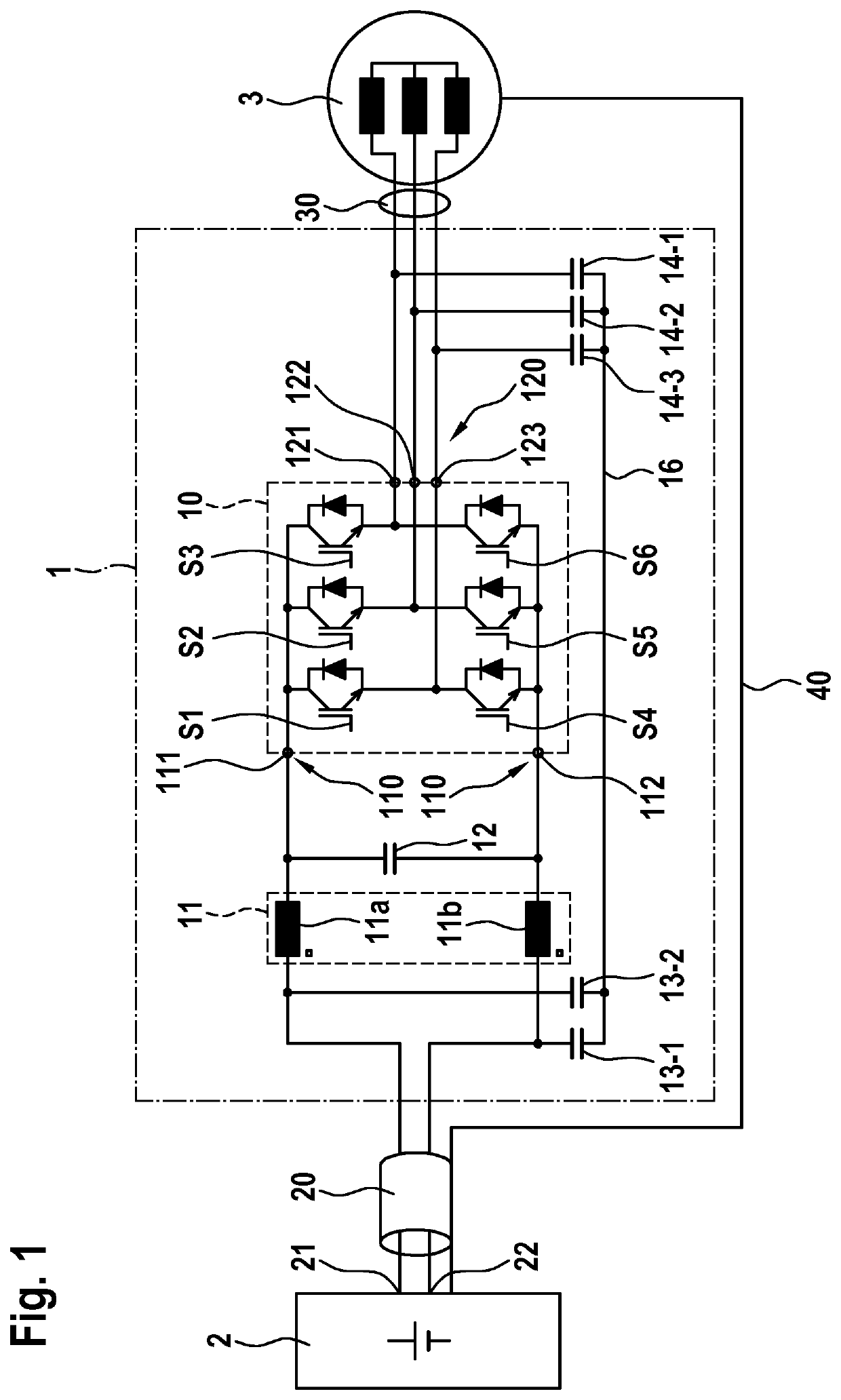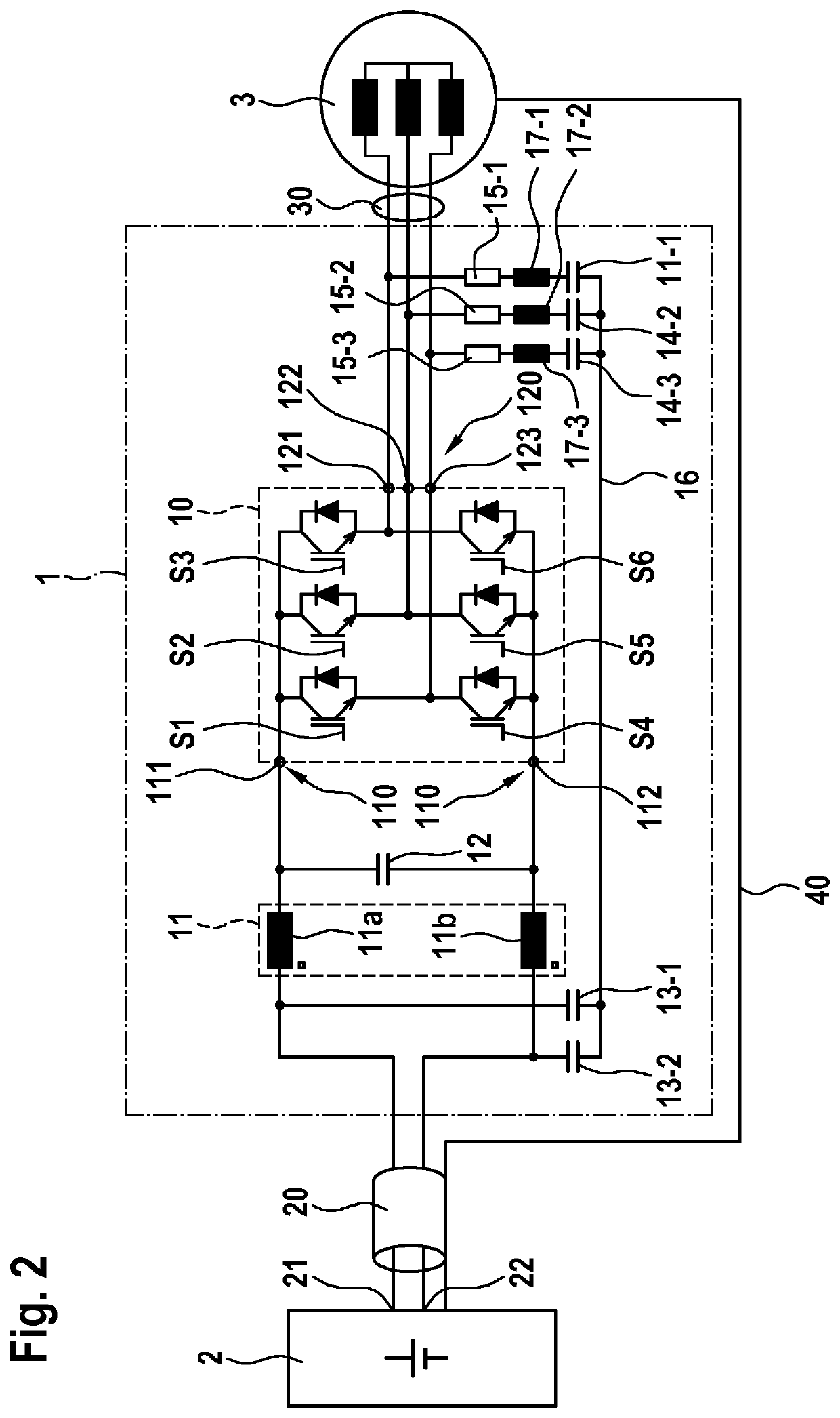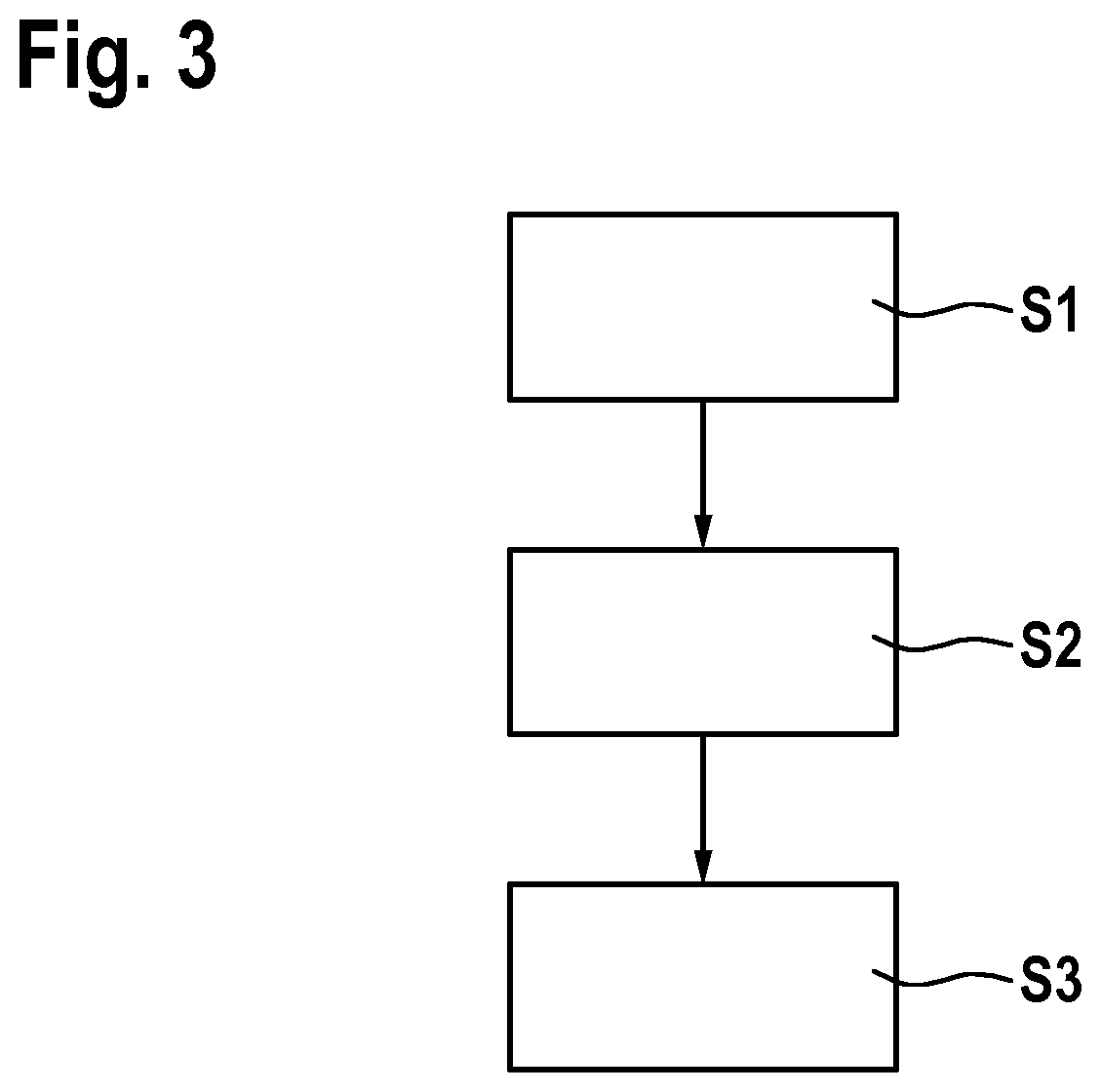Voltage converter, electric drive system and method for reducing interference voltages
a voltage converter and electric drive technology, which is applied in the direction of power conversion systems, control systems, ac motor control, etc., can solve the problems of undesired interference current increase, disadvantage, and so as to minimize common-mode interference of inverters, the effect of reducing the cost of operation and maintenan
- Summary
- Abstract
- Description
- Claims
- Application Information
AI Technical Summary
Benefits of technology
Problems solved by technology
Method used
Image
Examples
Embodiment Construction
[0029]FIG. 1 shows a schematic illustration of an electric drive system in accordance with one embodiment. The electric drive system comprises a DC voltage source 2, an electrical load 3 and a voltage converter 1. Furthermore, the electric drive system can if appropriate, as necessary, also comprise further components. For the sake of providing a better understanding of the invention, however, possible further components of the electric drive system have not been illustrated here. The DC voltage source 2 can be a battery, for example. In particular, the traction battery of an electric vehicle is possible, for example, as the DC voltage source 2. Furthermore, arbitrary further DC voltage sources are possible, however, as the DC voltage source 2. The electrical load 3 can be, as illustrated here, a three-phase electric motor, for example. In this case, by way of example, arbitrary electric motors are possible as the electrical load 3. In particular, the electric motor 3 can be an asyn...
PUM
 Login to View More
Login to View More Abstract
Description
Claims
Application Information
 Login to View More
Login to View More - R&D
- Intellectual Property
- Life Sciences
- Materials
- Tech Scout
- Unparalleled Data Quality
- Higher Quality Content
- 60% Fewer Hallucinations
Browse by: Latest US Patents, China's latest patents, Technical Efficacy Thesaurus, Application Domain, Technology Topic, Popular Technical Reports.
© 2025 PatSnap. All rights reserved.Legal|Privacy policy|Modern Slavery Act Transparency Statement|Sitemap|About US| Contact US: help@patsnap.com



